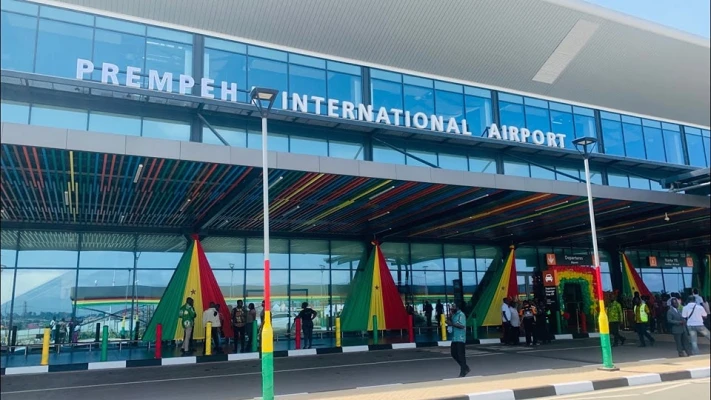Rejecting Compromise: Nkrumah’s...
November 20, 2025

Prempeh I International Airport, designated with the IATA code KMS and ICAO code DGSI, stands as a vital hub for air travel in Ghana, serving Kumasi, the capital of the Ashanti Region.
Since its inception, the airport has undergone significant development and expansion, transforming into a key player in Ghana's aviation landscape. The roots of Prempeh I International Airport trace back to its establishment in 1943 as a military air force base for the British Royal Air Force during World War II. Over the years, the airport evolved to cater to civilian aviation needs, undergoing several upgrades and renovations to enhance its infrastructure and operational capabilities.
In 1993, under the leadership of President Jerry John Rawlings, a new terminal building and modern navigational aids were commissioned, marking a significant milestone in the airport's transition from a military base to a domestic airport. Subsequent renovations in 2008, ahead of the African Cup of Nations 2008 (CAN 2008) hosted by Ghana, further bolstered the airport's facilities, including the rehabilitation of arrival and departure halls and the construction of a VIP Lounge.
Prempeh I International Airport achieved international status in 2003, opening doors to regional and international air travel. Despite acquiring international designation, the airport primarily served regional routes until 2014, when efforts to upgrade its facilities commenced in earnest.
The journey towards transforming Prempeh I International Airport into a fully-fledged international hub has been marked by strategic development phases aimed at enhancing infrastructure and operational efficiency.
Phase 1, completed in December 2014, focused on rehabilitating the runway and installing airfield lights to facilitate night operations. Subsequent phases saw the construction of a modern terminal building, expansion of parking areas, and the installation of advanced passenger facilities, including VIP lounges and commercial spaces.
Phase 2, initiated in November 2016, involved the construction of a new two-story terminal with state-of-the-art amenities, reflecting the airport's growing stature as a key gateway in the region. Phase 3, approved in April 2019, encompasses further expansion of the terminal building, fire station, and air control tower, ensuring compliance with international aviation standards.
Prempeh I International Airport's evolution into a premier aviation hub holds immense economic potential for the Ashanti Region and beyond. By facilitating increased air traffic and connectivity, the airport catalyzes tourism, trade, and investment, unlocking new opportunities for economic development and job creation.
As Prempeh I International Airport continues to undergo expansion and modernization, its role as a vital link in Ghana's air transport network becomes increasingly pronounced. With a commitment to excellence and innovation, the airport is poised to elevate the region's connectivity and contribute to Ghana's broader economic growth agenda.
November 20, 2025
November 17, 2025
November 13, 2025
November 6, 2025
November 5, 2025
November 4, 2025
October 31, 2025
October 30, 2025
October 30, 2025
October 30, 2025